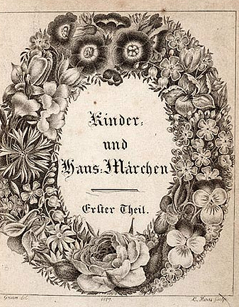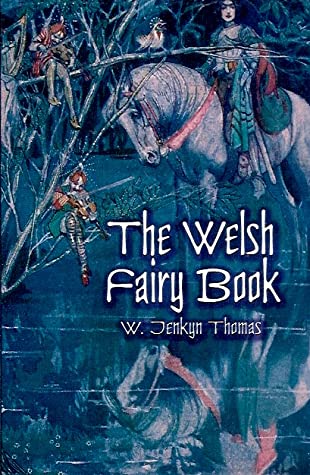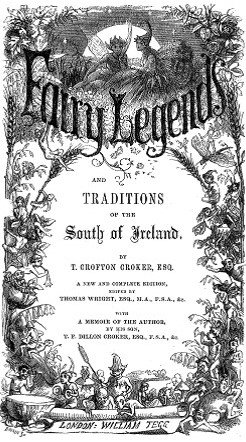Storied Places and Emplaced Stories: Landscape in Welsh and Irish Fairy Tales
Jane Carroll
Fairy tales are notoriously slippery things. That is, perhaps, part of their great appeal. The narratives are highly supple, existing in many versions, with characters and plots that are only loosely sketched in.
Most of the main characters are really types rather than true characters: the beautiful girl, the wicked witch, the resourceful hero, the clever companion.1 Fairy-tale plots, likewise, fall into easily recognisable but rather vague patterns: rags-to-riches, overcoming the monster, the hero’s journey, etc.2 Moreover, these stories are often only loosely fixed in terms of their temporal and geographical settings: they take place in a vague past (‘once upon a time’) and in a vague place (‘a land far away’).

Take, for example, the stories collected by Jacob and Wilhelm Grimm in their Kinder und Hausmärchen (1812). Although Robert Dunbar reminds us that ‘all fiction … is indicative to one extent or another of its geographical origins, even when it goes out of its way to ignore or to mask them’,3 there are only the vaguest outlines of a northern European landscape sketched into the Grimms’ stories. The stories take place in cottages or castles, on the edge of the woods or beside the sea. Each space fulfils a clear and limited function within the narrative: home is the site of family, the woods are spaces for encounters with (potentially dangerous) strangers, the tower is a place of confinement and conflict. As Éilís Ní Dhuibne summarises: ‘[Fairy tales] are highly stylised, tightly structured and richly layered. They have a unique atmosphere, cast of character types, and props: cottages and castles, monsters and princesses, magic mountains and bottomless wells.’4 When Ní Dhuibhne refers to ‘fairy tales’ here, most Anglophone readers will immediately think of the stories collected by the Grimms. The global popularity of their tales – helped in no small part by the behemoth that is the American film industry – has created an expectation that these stories are the standard model for fairy tales. We have come to expect the stereotypical and stylised characters and, also, to expect that the stories will not be rigidly set in space or time.
But not all fairy tales work this way. If we turn our attention to other kinds of fairy tale and folktale, we see that many of them buck the trends established in the Grimms’ work and put place – and, moreover, very specific, identifiable places – right at the heart of the narrative. The fairy tales collected in Ireland and Wales in the nineteenth century treat landscape and location in a very different way to the stories collected on the European mainland.

The Welsh story ‘The Stray Cow’ from W. Jenkyn Thomas The Welsh Fairy Book (1907) is one such example. In this story, a fairy cow walks out of a lake and is taken in by a farmer. She gives wonderful pure milk and the farmer becomes rich. He becomes greedy though and, depending on the version of the story, tries to sell the cow’s calf or to slaughter the cow for her silver hide. The fairy cow walks back into the lake and the farmer is left with nothing. So far, so stereotypical. The farmer’s character is a mere sketch and the narrative a simple moral lesson of greed and gratitude. Except that this summary does not do justice to how the story was first recorded and published in English. Thomas’s translation is rich with landscape detail:
In a secluded spot in the upland country behind Aberdovey is a small lake called LIyn Barfog, or the Lake of the Bearded One. Its waters are black and gloomy, no fish is ever seen to rise to the surface, and the fowls of the air fly high above it. In times of old the neighbourhood of the lake was haunted by a band of elfin ladies. They were sometimes seen in the dusk of a summer evening, clad all in green, accompanied by their hounds and comely milk-white kine; but no one was favoured with more than a passing glimpse till an old farmer residing at Dyssyrnant, in the adjoining valley of Dyffryn Gwyn, had the good luck to catch one of the Gwartheg y Llyn, or kine of the lake, which had fallen in love with the cattle of his herd. From the day that he captured the elfin cow the farmer’s fortune was made.5
Here Thomas makes use of many particular place names to firmly root this story in a recognisable landscape. The fairy cow doesn’t emerge from any old lake but from Llyn Barfog near Aberdovey. Rather than giving the reader a strangely ambiguous but universal story, Thomas instead offers a sense of the specific and the exact, creating a fairy tale that intersects with a real and knowable landscape.

In Ireland, the systematic recording, study and appreciation of Irish fairy tales really begins with ‘the amateur antiquarian and artist Thomas Crofton Croker (1798–1854) [who] brought Irish popular culture and traditional tales to the attention of the English-speaking public.’6 Croker’s Fairy Legends and Traditions of the South of Ireland, published anonymously in London in 1825, was a popular and critical success and was even translated into German by the Brothers Grimm.7 We can’t know exactly what made the Grimms so interested in Croker’s collection but one quality that may have made these stories so fascinating is their treatment of landscape.
Croker’s collection contains many onomastic stories which show how certain places in Ireland came by their names and so there is a rich sense of the intersections between history, folktale and geography within these stories. Other stories collected by Croker are deeply embedded within particular places, such as the story of the merrow or the selkie. The selkie story is, at its heart, a kind of mermaid tale, and while there are hundreds of variants from Scotland, Iceland, the Orkneys, Norway and Polynesia, the basic story is this: a fisherman comes across a selkie and steals its furry cloak or hood (in some versions it is called a magic caul or cowl), forcing the selkie to stay in human form. The fisherman takes the selkie home and they live together happily enough. However, one day the selkie finds her magic cloak or caul and puts it on, returning to seal form. She escapes back to the sea and is never seen again.
The selkie stories in Ireland are remarkable for being highly localised, and for being deeply and indelibly rooted in a small number of places. Bairbre Ní Fhloinn points out in her essay on seals in the Irish oral tradition, people in the west of Ireland insist that it is only the rón glas, or grey seal, that has magical associations. The rón beag, or common seal, has no otherworldly qualities.8 Interestingly, the geographical distribution of the grey seal around Ireland maps quite neatly onto the distribution of selkie stories and in the areas that we find grey seals we also find a distribution of names such as O’Shea, Conneely, O’Dowd, O’Hara and Gallagher, names traditionally believed to come from families with selkie blood in them. In Irish selkie stories the seals are often named. Ní Fhloinn reminds us that in the variants of the story common around Galway and Mayo, the selkies are male and named Tadhg and Donncha. In other places and in other stories, the selkies are not named but the fishermen who encounter them are.
The variant of the selkie story collected in Thomas Crofton Croker’s Fairy Legends and Traditions of the South of Ireland (1825), ‘The Lady of Gollerus’ begins like this:
On the shore of Smerwick harbour, one fine summer’s morning, just at day-break, stood Dick Fitzgerald ‘shoghing the dudeen,’ which may be translated, smoking his pipe. The sun was gradually rising behind the lofty Brandon, the dark sea was getting green in the light, and the mists clearing away out of the valleys went rolling and curling like the smoke from the corner of Dick’s mouth.9
So, rather than a vague sense of time and a vague sense of place as we have in the Grimms’ fairy stories, this tale is absolutely rooted in a particular moment and within a particular place. It is just at daybreak and Dick Fitzgerald is standing beside Smerwick harbour, smoking his pipe. We have a clear sense of the landscape here, the colour of the dark sea and the shape of the pale mist curling around the valleys, the smell of the pipe smoke, the feeling of a summer’s day just beginning to warm up. The setting is not some vague ‘far away’ space but a very specific and identifiable location in Co. Kerry in the southwest of Ireland.
These are just two examples of many Welsh and Irish fairy tales that make use of landscape in this way. This is not to say, of course, that this sort of connection between story and real place only happens in Wales and Ireland: there are storied places and emplaced stories the world over. While we may be used to thinking of the landscapes of fairy tales as full of rigid patterns rather than real places, I suggest that these sorts of formulaic settings are really the ones we associate with the Grimms’ fairy tales. It’s only because of the popularity of their stories that we have come to think of them as setting the standard for how fairy tales should look and feel. Jack Zipes suggests that the ‘universality’ of the Grimms’ stories stems from that fact that their ‘style and ideology … suited middle-class taste throughout Europe and North-America, and the subsequent value of the tales has been determined by the manner in which people throughout the world have regarded them as universal and classic’.10 If we broaden our reading, even just to the islands west of the European mainland, we can find a wealth of stories that move against – and even subvert – these apparently universal trends. Although Welsh and Irish fairy stories are still ambiguous things that evade our grasp just like a fairy cow that disappears under the surface of a lake, or a selkie who slips from the house in the night clutching her cloak, we can hold on to the sense of place that these stories give us and, if nothing else, can point to the surface of the lake or the shore of the harbour and say ‘There! Right there! That’s where it happened!’.
Notes
[1] A list of character types identified by Vladimir Propp can be found at https://www.bbc.co.uk/bitesize/guides/zgydhv4/revision/1.
[2] See Christopher Booker, The Seven Basic Plots: Why We Tell Stories (London: Continuum, 2004).
[3] Robert Dunbar, ‘It’s the way we tell ’em: voices from Ulster Children’s Fiction’ p.62.
[4] Éilís Ní Dhuibhne, ‘The fabled roots of fiction’ review of Once Upon a Time: A Short History of Fairy Tale by Marina Warner, The Irish Times, November 22, 2014.
[5] W. Jenkyn Thomas, ‘The Stray Cow’, p.75.
[6] Anne Markey, ‘The Discovery of Irish Folklore’, p.25.
[7] This was published as Mährchen und Sagen aus Süd-Irland. Aus dem Engl. Übersezt und mit Ammerkungen bereichert von den Brüdern Grimm (Leipzig: Friedrick Fleischur, 1825).
[8] Bairbre Ní Fhloinn, ‘Tadhg, Donncha and some of their Relations: Seals in Irish Oral Tradition’, p.3.
[9] Thomas Crofton Croker, ‘The Lady of Gollerus’, p.180.
[10] Jack Zipes ‘Cross-Cultural Connections and the Contamination of the Classical Fairy Tale’, p.868.
Works cited
Primary Texts
Croker, Thomas Crofton. ‘The Lady of Gollerus’, in Fairy Legends and Traditions of the South of Ireland. (London: William Tegg, 1862):180–189.
Jenkyn, Thomas, W. ‘The Stray Cow’, in The Welsh Fairy Book (1907) (Mineola, New York: Dover Publications, 2013): 75–76.
Secondary Texts
Booker, Christopher, The Seven Basic Plots: Why We Tell Stories (London: Continuum, 2004).
Dunbar, Robert, ‘It’s the way we tell ’em: Voices from Ulster Children’s Fiction’, in Mary Shine Thompson and Valerie Coghlan (eds.) Divided Worlds (Dublin: Four Courts Press, 2007): 61–75.
Ní Dhuibhne, Éilís, The fabled roots of fiction’, review of Once Upon a Time: A Short History of Fairy Tale by Marina Warner, The Irish Times, November 22, 2014.
Ní Fhloinn, Bairbre, Tadhg, Donncha and some of their Relations: Seals in Irish Oral Tradition’, in Patricia Lysaght, Séamus Ó Catháin, and Dáthaí Ó hÓgáin (eds) Islanders and Water-Dwellers (Dublin: Four Courts, 1999): 223–245.
Markey, Anne. The Discovery of Irish Folklore.’ New Hibernia Review/Iris Éireannach Nua 10, no. 4 (2006): 21–43.
Zipes, Jack. ‘Cross-Cultural Connections and the Contamination of the Classical Fairy Tale’, in Zipes (ed.) The Great Fairy Tale Tradition: From Straparola and Basile to the Brothers Grimm (New York and London: Norton, 2001): 845–869.
Jane Carroll is an Ussher Assistant Professor of Children’s Literature at Trinity College Dublin. Her teaching and research interests centre on children’s literature, landscape, and material culture in fiction. Her first monograph, Landscape in Children’s Literature, published by Routledge in 2012 as part of the Children’s Literature and Culture series, traces the development of literary landscapes from medieval texts through to twentieth-century children’s literature. She has also published on Susan Cooper, Terry Pratchett, J.R.R. Tolkien, M.R. James and Jules Verne. She is currently working on a new project on material culture in late nineteenth- and early twentieth-century children’s fantasy texts.
